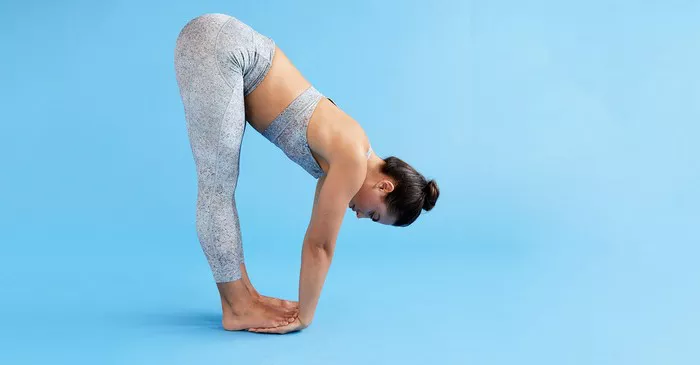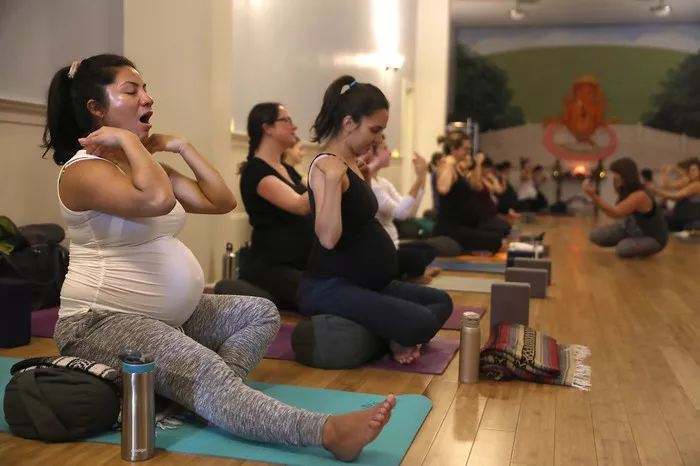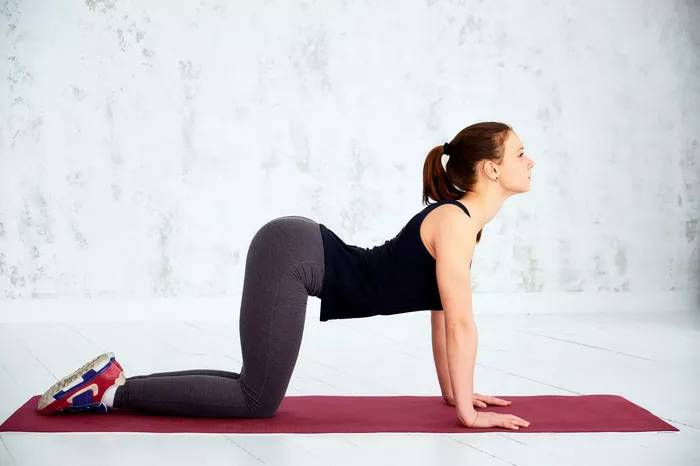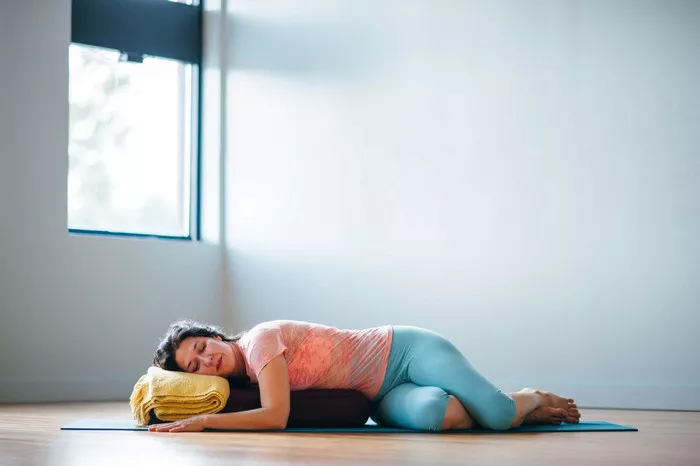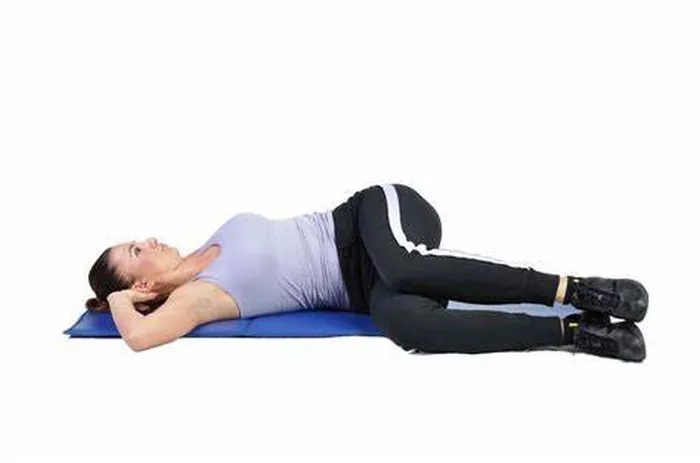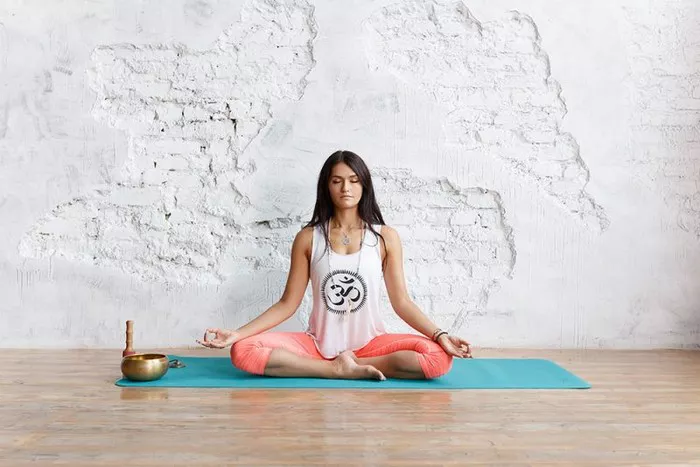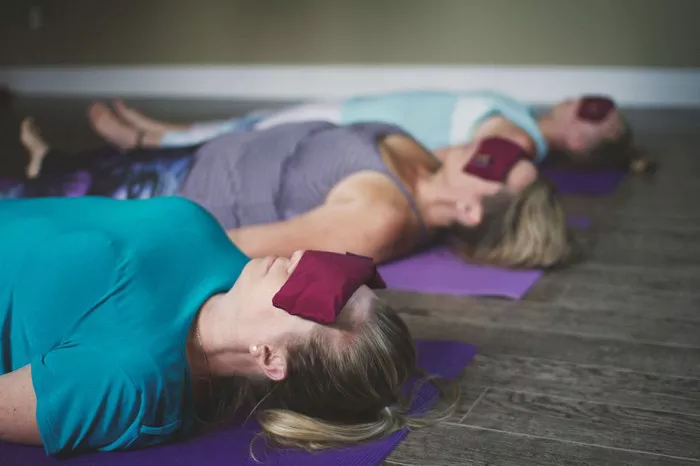Yoga Nidra, also known as “yogic sleep,” is a form of guided meditation that offers a deeply restorative experience. It is often referred to as a state of conscious relaxation that induces a deep state of rest while maintaining a high level of awareness. In recent years, Yoga Nidra has gained significant popularity due to its many health benefits, including its ability to reduce stress, improve sleep quality, and promote overall mental and physical well-being. This article will explore what Yoga Nidra is, its effects on the body and mind, and the various health benefits it offers.
What is Yoga Nidra?
Yoga Nidra is a Sanskrit term that translates to “yogic sleep.” It is a state of conscious relaxation, where the practitioner remains in a state of deep relaxation yet retains awareness of their surroundings. Unlike regular sleep, where the mind becomes dormant, in Yoga Nidra, the mind remains active and aware, but the body is in a state of complete relaxation. This practice is typically guided by a trained instructor, who leads participants through a series of stages that help them relax deeply and enter a meditative state.
Yoga Nidra is usually practiced lying down in a comfortable position, often with the help of props such as pillows or blankets to support the body. The practice involves a series of mental exercises designed to relax the body and mind, such as body scanning, breath awareness, visualizations, and affirmations. The practice is rooted in traditional yogic philosophy and meditation techniques, but its modern interpretation has made it accessible and beneficial to a wide range of people.
How Does Yoga Nidra Work?
The process of Yoga Nidra involves several stages, each designed to help the practitioner achieve a deep state of relaxation and awareness. These stages help guide the practitioner’s consciousness into a restful yet awake state, where they can experience profound healing. Let’s explore the key components of a typical Yoga Nidra session.
1. Preparation and Settling In
The practice usually begins with the practitioner lying down in a comfortable position, with the body fully supported. The instructor may ask the participant to set an intention (called Sankalpa) for the practice, which serves as a mental focus or affirmation that the practitioner can work on during the session.
2. Body Scan
The first technique used in Yoga Nidra is a body scan, where the practitioner brings their awareness to each part of the body, starting from the tips of the toes and gradually moving up to the head. This process helps release physical tension and encourages relaxation throughout the entire body.
3. Breath Awareness
The next stage focuses on the breath. The practitioner brings their attention to the natural rhythm of their breathing, allowing the breath to become slow, deep, and calming. This stage helps calm the nervous system and further induces a relaxed state.
4. Visualization
Yoga Nidra often involves guided visualizations, where the practitioner imagines peaceful or soothing images, such as a tranquil beach, a mountain, or a beautiful garden. These visualizations help to relax the mind and promote mental clarity.
5. Affirmations (Sankalpa)
During Yoga Nidra, the practitioner may repeat positive affirmations or intentions (Sankalpa) to align the subconscious mind with their desires and goals. These affirmations help to manifest positive changes in life and cultivate a sense of peace and well-being.
6. State of Consciousness
The goal of Yoga Nidra is to bring the practitioner into a state of deep relaxation, where the body is completely relaxed, yet the mind remains alert. This state of deep relaxation, akin to the early stages of sleep, is thought to allow the body to heal and the mind to reset.
7. Completion and Awakening
At the end of the session, the practitioner is gently brought back to full awareness. The instructor may guide the practitioner to slowly reawaken the body by becoming aware of the senses and gradually moving the limbs before returning to a fully alert state.
The Benefits of Yoga Nidra
Yoga Nidra offers a multitude of benefits for both the body and mind. Whether you are seeking relaxation, better sleep, stress relief, or emotional healing, Yoga Nidra can help you achieve your goals. Below are some of the most significant benefits of this practice.
1. Stress Relief and Relaxation
One of the primary benefits of Yoga Nidra is its ability to promote deep relaxation and reduce stress. In today’s fast-paced world, stress is a common issue that affects many people. Yoga Nidra’s ability to trigger the relaxation response in the body helps reduce the levels of the stress hormone cortisol, which can have a profound impact on overall health. By practicing Yoga Nidra, individuals can experience a significant reduction in feelings of anxiety and stress, helping to restore balance and calm to both the body and mind.
2. Improved Sleep Quality
Yoga Nidra has been shown to be highly effective in improving sleep quality and helping those who struggle with insomnia. The deep relaxation techniques used in Yoga Nidra help calm the nervous system, making it easier for the body to enter a restful sleep. By regularly practicing Yoga Nidra, individuals may experience better sleep patterns, reduced nighttime waking, and an overall improvement in the quality of their sleep.
3. Enhanced Mental Clarity and Focus
Yoga Nidra can help clear the mind and improve mental clarity. The practice encourages mindfulness and self-awareness, which can help individuals become more focused and present in their daily lives. As the mind becomes more calm and centered, individuals may find it easier to concentrate on tasks and make better decisions. Additionally, regular practice of Yoga Nidra can help reduce mental fatigue and improve cognitive functioning.
4. Emotional Healing and Resilience
Yoga Nidra can also be a powerful tool for emotional healing. The practice provides a safe space for individuals to process difficult emotions, release negative thought patterns, and cultivate a sense of emotional resilience. Through the use of affirmations and visualization techniques, individuals can begin to shift their mindset, overcome limiting beliefs, and create a more positive outlook on life. This can be particularly helpful for those dealing with trauma, grief, or emotional challenges.
5. Reduced Symptoms of Anxiety and Depression
Yoga Nidra has been found to be effective in reducing symptoms of anxiety and depression. By promoting deep relaxation and reducing stress, Yoga Nidra can help regulate the nervous system and bring a sense of calm to the mind. Studies have shown that Yoga Nidra can lower levels of anxiety and depression, making it an effective complementary therapy for individuals seeking alternative treatments for mental health conditions.
6. Boosts Immune System and Physical Health
Yoga Nidra may also have physical health benefits, including boosting the immune system. By deeply relaxing the body and promoting the release of stress, the practice helps balance the autonomic nervous system and supports the body’s natural healing processes. Regular practice of Yoga Nidra may also improve circulation, reduce muscle tension, and promote overall physical well-being.
7. Increased Self-Awareness and Mindfulness
Yoga Nidra is a powerful tool for cultivating self-awareness and mindfulness. Through the process of guided meditation and conscious relaxation, practitioners are encouraged to observe their thoughts, emotions, and physical sensations without judgment. This heightened awareness can lead to a greater understanding of oneself and a deeper connection with the present moment. Over time, regular practice can help individuals develop greater emotional intelligence and a deeper sense of inner peace.
8. Supports Personal Growth and Transformation
Yoga Nidra offers a pathway to personal growth and transformation. By setting an intention (Sankalpa) at the beginning of the practice, practitioners can align their subconscious mind with their goals and desires. The process of consciously directing the mind towards positive change can help manifest new opportunities, overcome self-limiting beliefs, and promote a sense of empowerment. Many people report experiencing profound shifts in their lives after practicing Yoga Nidra, as they begin to let go of old patterns and step into new possibilities.
9. Aids in Pain Management and Recovery
Yoga Nidra can be beneficial for individuals dealing with chronic pain or recovering from injury. The deep relaxation techniques used in Yoga Nidra can help manage pain by calming the nervous system and promoting the release of endorphins, the body’s natural painkillers. Additionally, Yoga Nidra’s emphasis on body awareness and relaxation can help individuals cope with the physical and emotional aspects of healing and recovery.
10. Accessibility for All Levels
One of the greatest advantages of Yoga Nidra is that it is accessible to people of all ages and abilities. Unlike more physically demanding forms of yoga, Yoga Nidra can be practiced by anyone, regardless of their level of physical fitness or experience with yoga. The practice can be done lying down, making it suitable for those with mobility limitations or physical discomfort. It is also an excellent practice for those who may not have the time or energy for more active forms of yoga but still wish to experience the benefits of deep relaxation and mindfulness.
Conclusion
Yoga Nidra is a powerful and accessible practice that offers a wide range of benefits for both the body and mind. Whether you are seeking relaxation, better sleep, emotional healing, or enhanced mental clarity, Yoga Nidra can help you achieve your goals. With its ability to reduce stress, improve sleep quality, boost the immune system, and promote emotional well-being, Yoga Nidra is a transformative practice that can have a profound impact on your overall health and quality of life.
By incorporating Yoga Nidra into your routine, you can cultivate a greater sense of peace, self-awareness, and resilience, helping you navigate the challenges of everyday life with greater ease and balance. As the practice continues to grow in popularity, more and more people are discovering the life-changing benefits of Yoga Nidra. Whether practiced as a tool for relaxation or as a path to personal growth, Yoga Nidra is a valuable resource for anyone looking to enhance their well-being and embrace a more mindful, peaceful way of living.
Related Topics:

